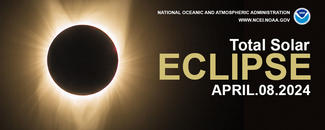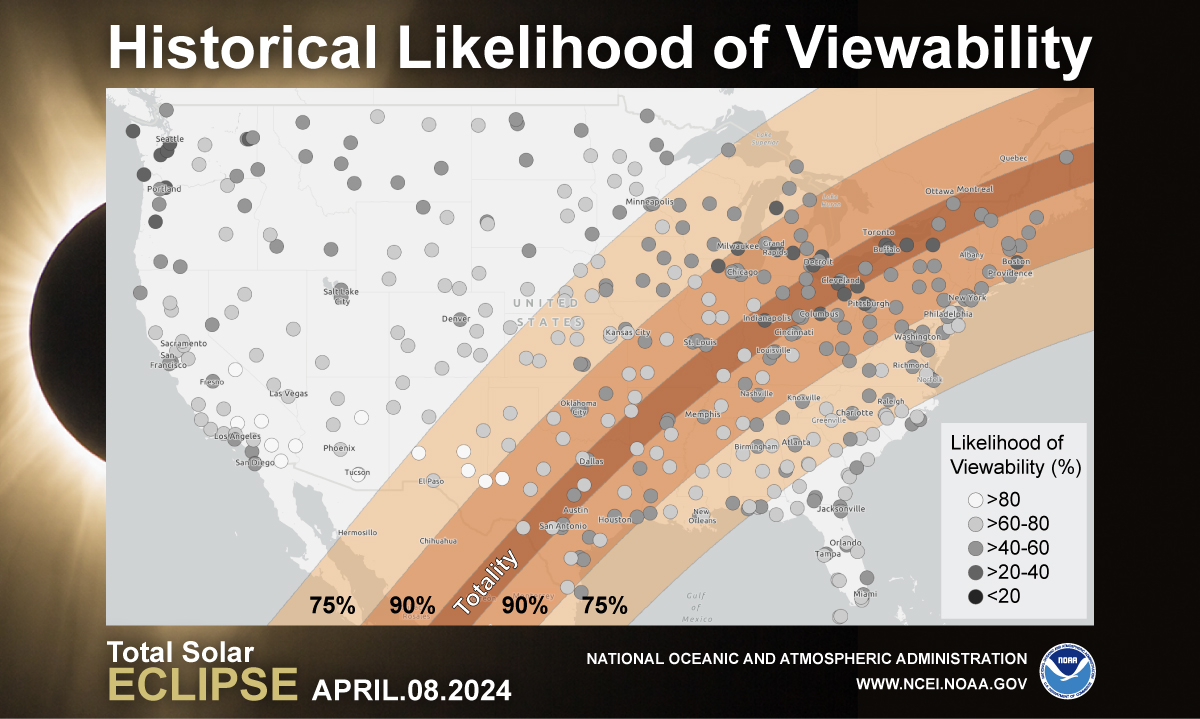
The event of the decade is set to occur next week—a total solar eclipse is ready to travel across America from Texas to Maine. In order to view this special event, climate conditions all need to be in alignment. In honor of Earth Month, check out our U.S. Climate Normals-based interactive map to help you view the total solar eclipse.
NOAA’s National Centers for Environmental Information (NCEI) has reviewed past cloud conditions, among other important climate conditions for viewability, with scientists from the North Carolina Institute for Climate Studies (NCICS). This collaborative effort birthed an interactive map that shows the average heat index, temperature, dewpoint, wind chill, cloud obscuration levels, and overall viewability for select locations across the contiguous U.S.

Keep An Eye on the Skies (and the Forecast)
We’re not naive though. Our interactive map isn’t the only tool that could be helpful on your journey to view the eclipse.
As the eclipse approaches, your local forecast with the National Weather Service (NWS) will help equip viewers with the anticipated weather conditions for their area of choice. While spring often brings to mind flowers, bumblebees, and sunny days—according to the NWS, the months of March, April, and May mark the arrival of peak Severe Weather Season. Stay alert and be prepared to change your plans if severe weather is forecast to impact your area during the eclipse.
The Sun, Moon, and You Viewing Events
In case you’re interested in expanding your eclipse viewing into a day full of festivities, join NESDIS at one of the Sun, Moon, and You viewing events in Colorado, Texas, Arkansas, and Washington, D.C. These events are a collaborative effort with NOAA, NASA, the National Park Service, the National Science Foundation (NSF), and other organizations to provide attendees with an unforgettable viewing experience, along with dozens of information booths and experts from all over the country to enhance the total solar eclipse experience.
One of the events will be held at the Cotton Bowl Stadium in Dallas, Texas. The guest speaker? None other than Neil deGrasse Tyson along with Ready Jet Go! from PBS. In addition to all of that excitement, experts from NOAA, NSF, and NASA will talk about the eclipse, space weather, and why we study the sun.
Final Reminder
Don’t even think of skipping out on this event. Whether you see it in partiality or in totality, the total solar eclipse will be the last of its kind for more than two decades in the contiguous U.S. The next total solar eclipse on U.S. soil won’t occur until March 2033 and will only be viewable in Alaska. Following the April 8, 2024 event, the next real opportunity for many in the U.S. to see a total solar eclipse won’t be until August 2045—when the eclipse will travel the contiguous U.S. from California to Florida. If you have a baby born this year, they will be a legal adult before the next eclipse crosses from coast to coast in America!



